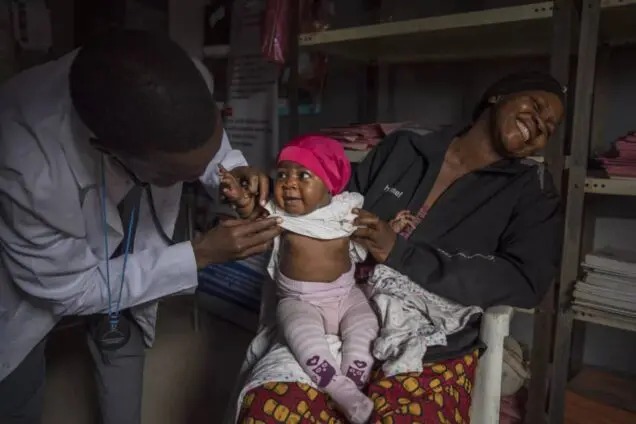The United Nations International Children’s Emergency Fund (UNICEF) says pneumonia is the biggest infectious killer of children worldwide, claiming more lives than any other infectious disease.
According to the organization, every year, pneumonia kills more than 725,000 children under the age of five, including around 190,000 newborns, who are particularly vulnerable to infection.
“Every 43 seconds, at least one child dies from pneumonia. All these deaths are preventable. It is inexcusable that thousands of children are unable to access the essential health services and treatments that can prevent pneumonia and save their lives,” UNICEF said.
In a recent publication, UNICEF stressed that urgent action is needed now to end preventable deaths caused by pneumonia, change the course of the disease, and ensure every child survives.
The organization called for the strengthening and prioritization of routine immunization and scaling up the coverage of Pneumococcal (PCV), Measles, and Diphtheria-Tetanus-Pertussis (DTP) vaccines to above 90 percent, ensuring every child is protected from pneumonia.
UNICEF also emphasized the need for improved access to basic oxygen, so no child is left fighting for breath. The organization stressed the importance of investing in the prevention and treatment of severe acute malnutrition to reduce child deaths from pneumonia.
Additionally, UNICEF called for investment in health workers and infrastructure to bring essential health services closer to families. “Health workers must have the right training, medicines, and diagnostic tools,” the organization stated. It also highlighted the importance of continued efforts to engage and empower communities to support prevention and treatment.
Pneumonia is an acute respiratory infection of the lungs and can be caused by bacteria, viruses, or fungi in the air.
Symptoms of pneumonia include coughing, trouble breathing, and fever. Children with pneumonia often experience rapid breathing, or their lower chest may retract when they inhale (healthy individuals’ chest expands during inhalation).
The disease is contagious and can spread through airborne particles (such as a cough or sneeze) and can also be transmitted through other fluids, such as blood during childbirth or from contaminated surfaces.
Health workers diagnose pneumonia through a physical exam, checking for abnormal breathing patterns and listening to the child’s lungs. In some cases, chest x-rays or blood tests are used. In countries with weak health care systems, where access to doctors, chest x-rays, and laboratories is limited, health workers often rely on counting the number of breaths per minute to diagnose pneumonia.
The treatment for pneumonia depends on its type. In developing countries, the majority of pneumonia cases are caused by bacteria, which can be treated with low-cost antibiotics.
Oxygen is an essential, life-saving treatment for children and newborns suffering from severe pneumonia, as the inflammation in their lungs prevents enough oxygen from entering their bloodstream.
Access to oxygen has long been unavailable to those in need. In many countries with weak health systems, oxygen is only available at higher-level health facilities and hospitals. The pressure of COVID-19 on oxygen systems has further exposed these gaps.
Preventing pneumonia is possible through protective measures such as ensuring newborns and young children are breastfed early, vaccinated, have access to clean water, good nutrition, and limited exposure to air pollution.
Studies have shown that good hygiene practices, including washing hands with soap and clean water, reduce the risk of pneumonia by lowering exposure to bacteria.
Pneumonia caused by bacteria is easily preventable with vaccines. However, 40 percent of children around the world are not fully protected with the primary vaccine to prevent pneumonia—the Pneumococcal (PCV) vaccine.
Other vaccines, such as Diphtheria-Tetanus-Pertussis, Measles-containing vaccines, and Haemophilus Influenzae type B (Hib) vaccines, also protect children from pneumonia.
Countries with the highest number of child pneumonia deaths are concentrated in sub-Saharan Africa and Asia.
Child deaths from pneumonia are most common in the world’s poorest countries, where the most deprived and marginalized children suffer the most.
ALSO READ:


